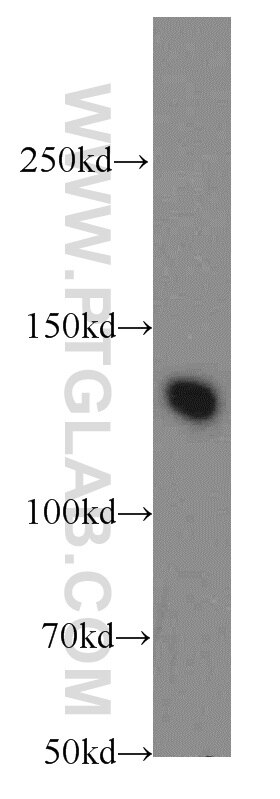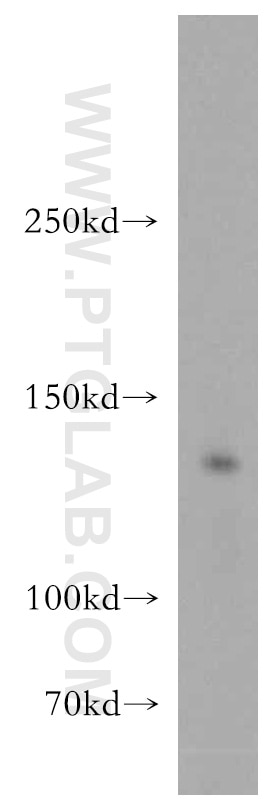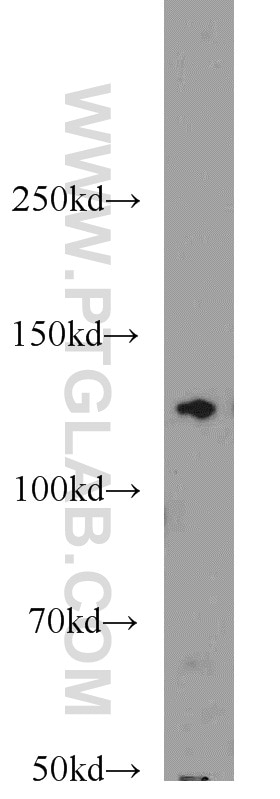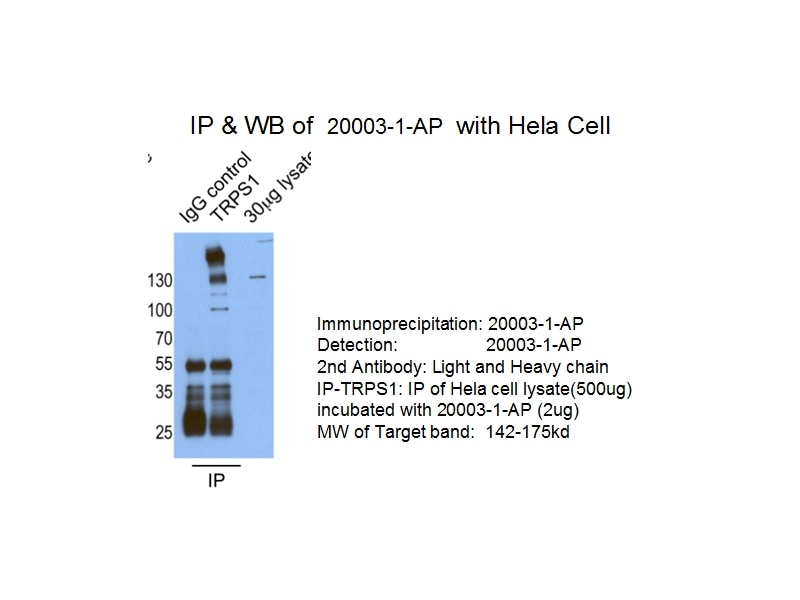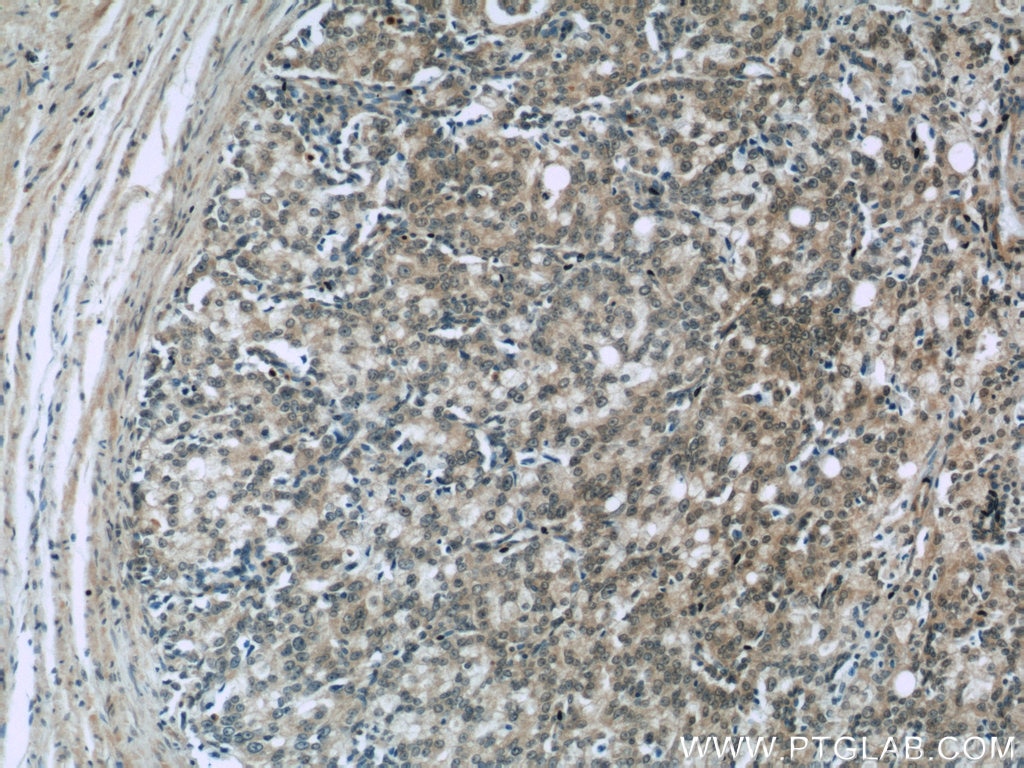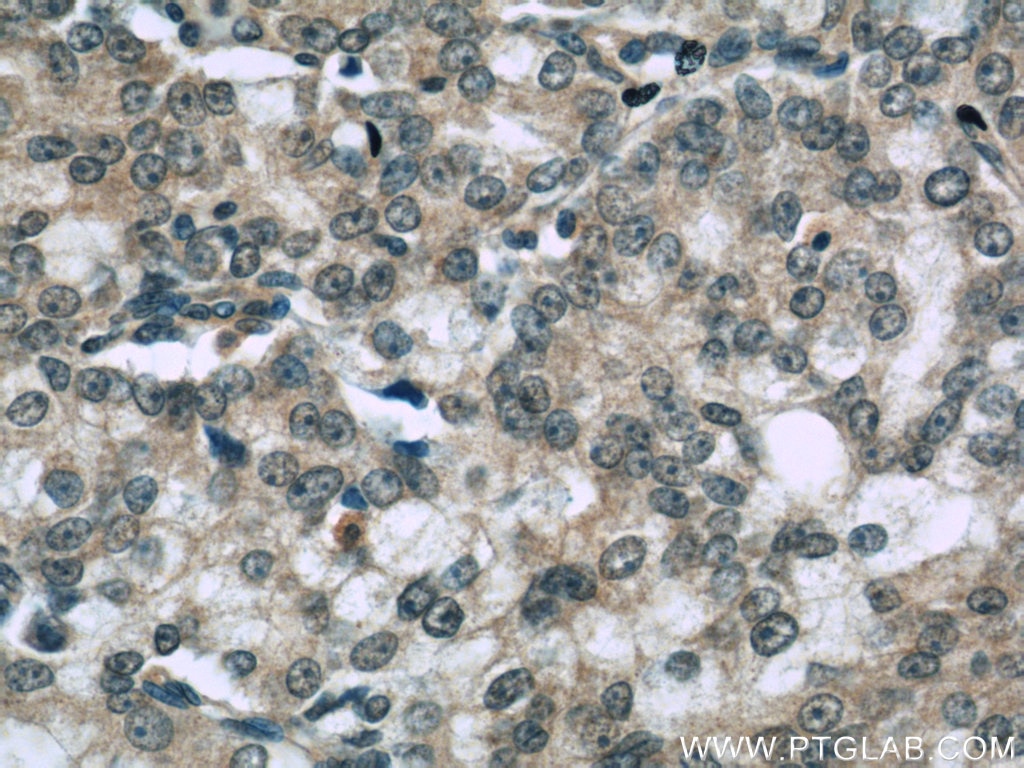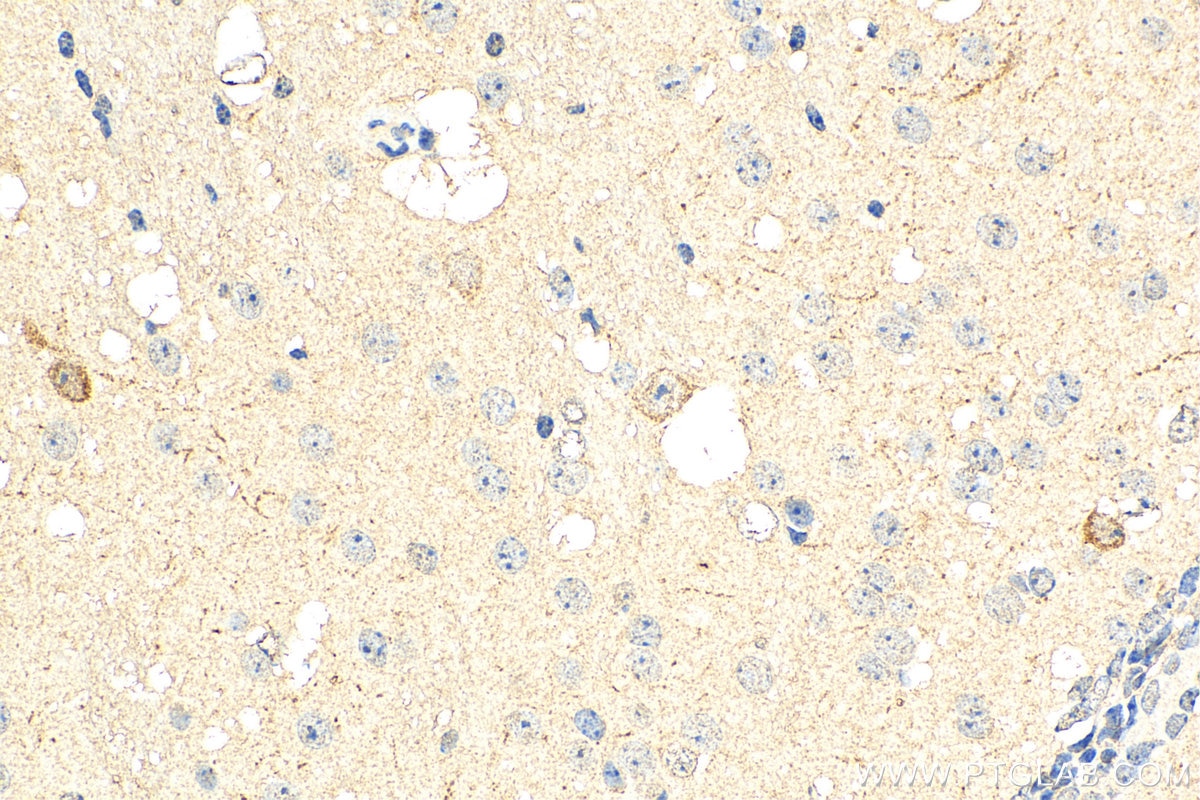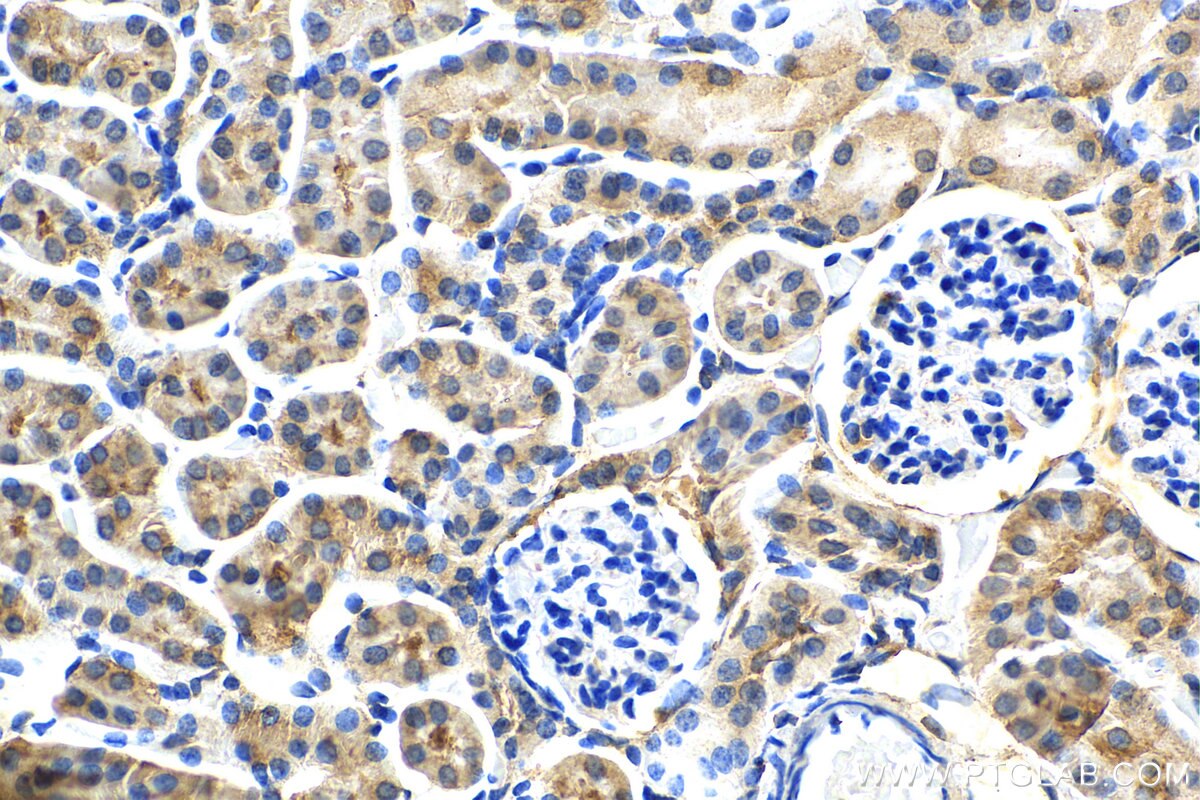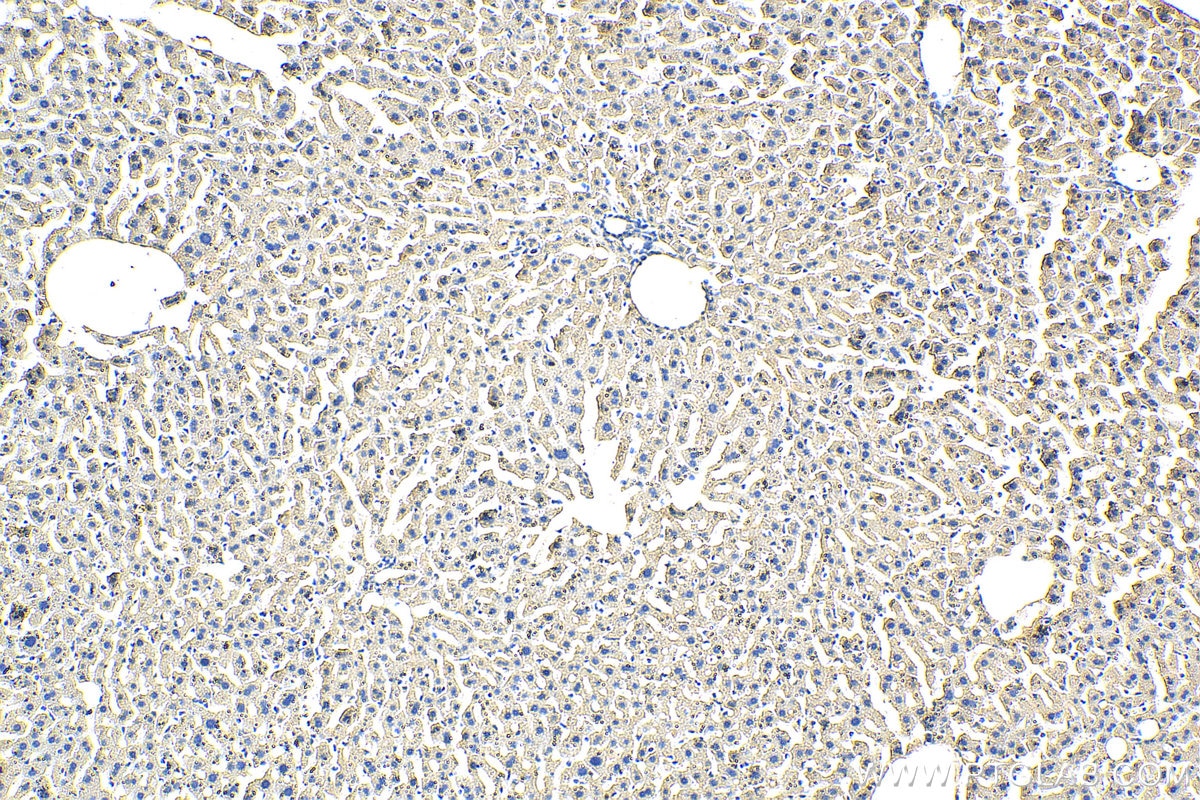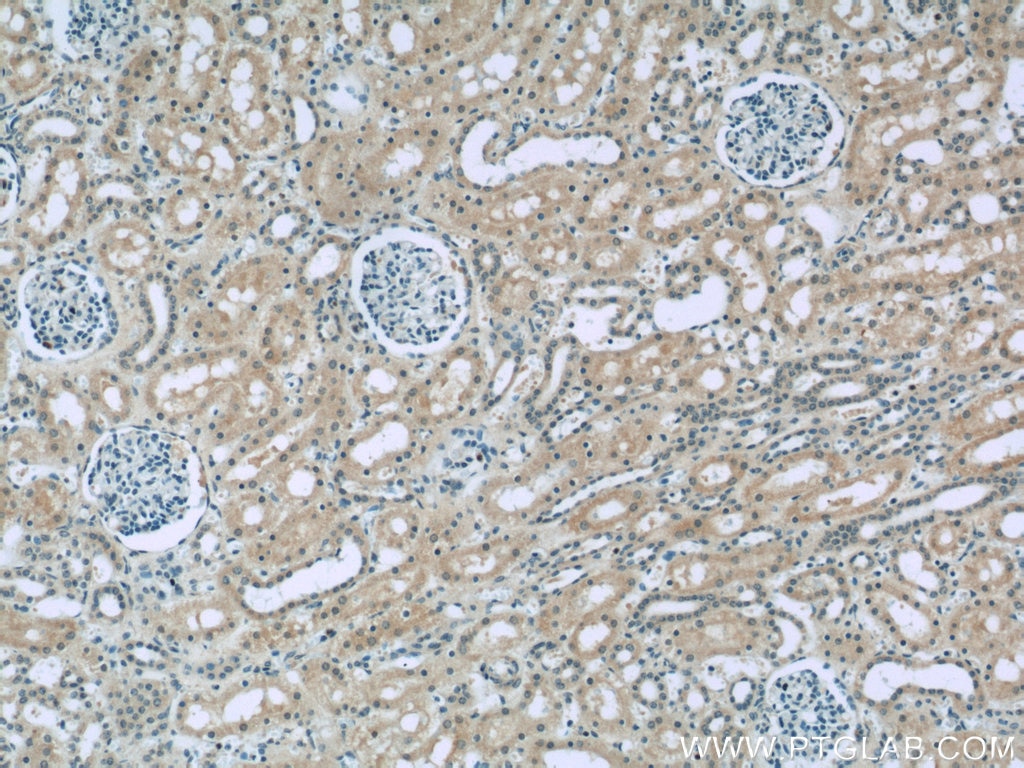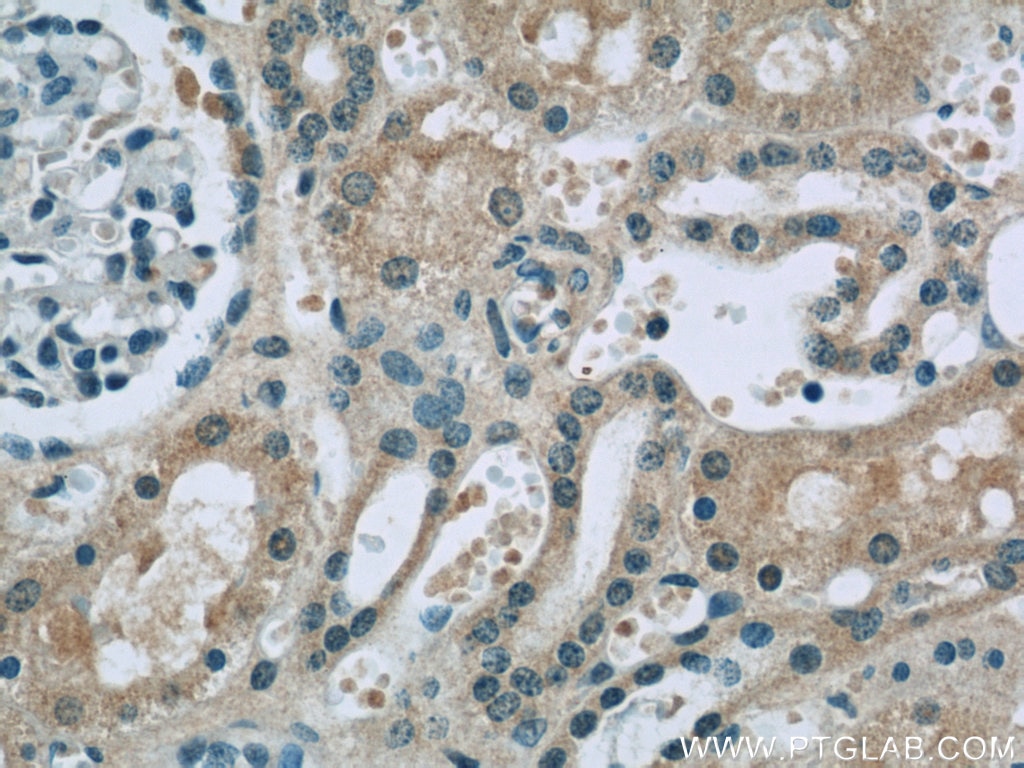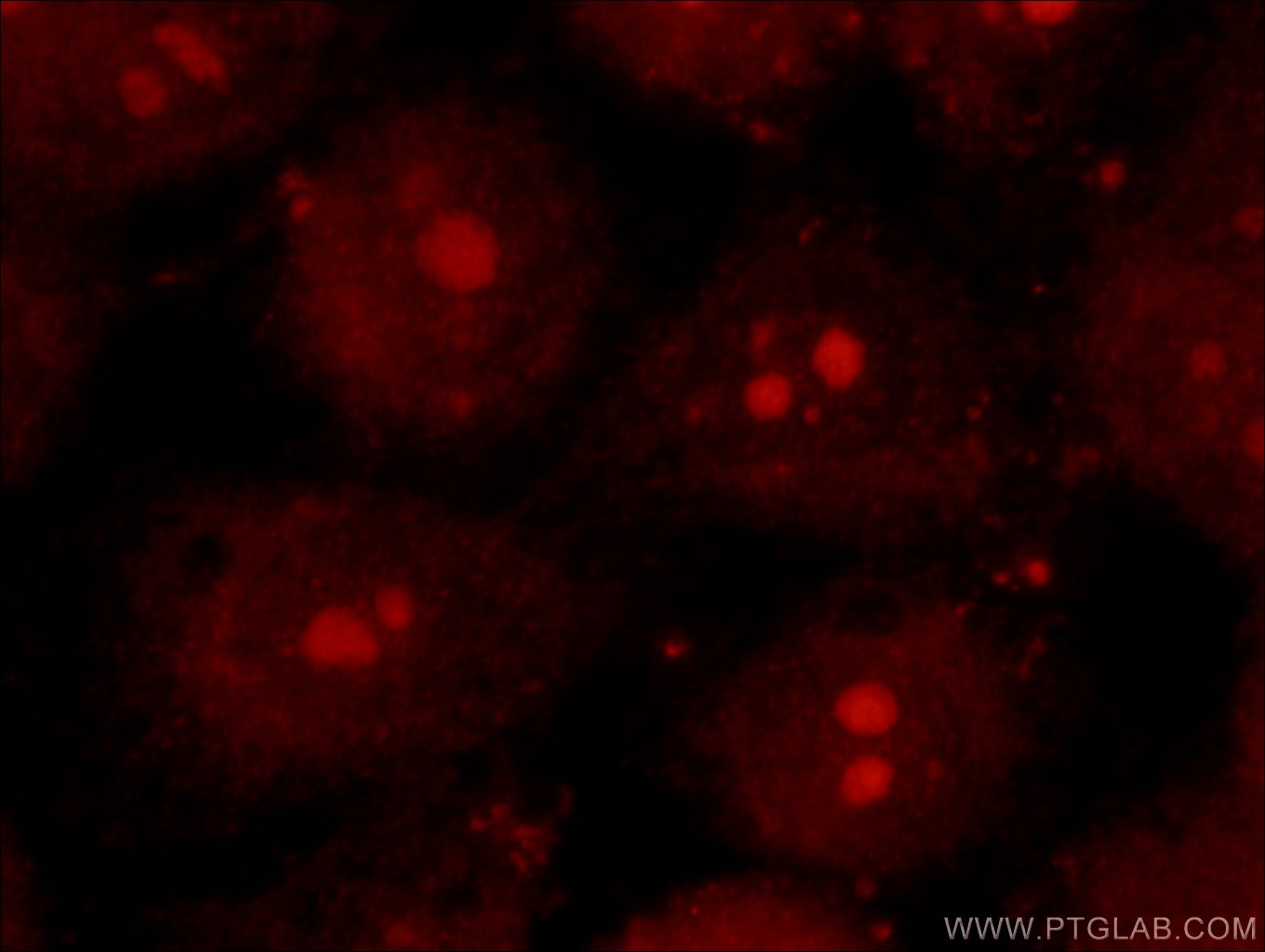Tested Applications
| Positive WB detected in | mouse brain tissue, mouse kidney tissue, rat brain tissue |
| Positive IP detected in | HeLa cells |
| Positive IHC detected in | human prostate cancer tissue, human kidney tissue, mouse brain tissue, mouse kidney tissue, mouse liver tissue Note: suggested antigen retrieval with TE buffer pH 9.0; (*) Alternatively, antigen retrieval may be performed with citrate buffer pH 6.0 |
| Positive IF/ICC detected in | HepG2 cells |
Recommended dilution
| Application | Dilution |
|---|---|
| Western Blot (WB) | WB : 1:500-1:1000 |
| Immunoprecipitation (IP) | IP : 0.5-4.0 ug for 1.0-3.0 mg of total protein lysate |
| Immunohistochemistry (IHC) | IHC : 1:20-1:200 |
| Immunofluorescence (IF)/ICC | IF/ICC : 1:20-1:200 |
| It is recommended that this reagent should be titrated in each testing system to obtain optimal results. | |
| Sample-dependent, Check data in validation data gallery. | |
Published Applications
| KD/KO | See 3 publications below |
| WB | See 6 publications below |
| IHC | See 5 publications below |
| IF | See 3 publications below |
| ChIP | See 3 publications below |
Product Information
20003-1-AP targets TRPS1 in WB, IHC, IF/ICC, IP, chIP, ELISA applications and shows reactivity with human, mouse, rat samples.
| Tested Reactivity | human, mouse, rat |
| Cited Reactivity | human, mouse |
| Host / Isotype | Rabbit / IgG |
| Class | Polyclonal |
| Type | Antibody |
| Immunogen |
Peptide Predict reactive species |
| Full Name | trichorhinophalangeal syndrome I |
| Calculated Molecular Weight | 142 kDa |
| Observed Molecular Weight | 135-142 kDa |
| GenBank Accession Number | NM_014112 |
| Gene Symbol | TRPS1 |
| Gene ID (NCBI) | 7227 |
| RRID | AB_10666999 |
| Conjugate | Unconjugated |
| Form | Liquid |
| Purification Method | Antigen affinity purification |
| UNIPROT ID | Q9UHF7 |
| Storage Buffer | PBS with 0.02% sodium azide and 50% glycerol, pH 7.3. |
| Storage Conditions | Store at -20°C. Stable for one year after shipment. Aliquoting is unnecessary for -20oC storage. 20ul sizes contain 0.1% BSA. |
Background Information
TRPS1, also named as GC79 and LGCR, is a transcriptional repressor. TRPS1 may act to restrict expression of GATA-regulated genes at selected sites and stages in vertebrate development. It might be involved in prostate cancer apoptosis. Defects in TRPS1 are the cause of tricho-rhino-phalangeal syndrome type 1/2/3 (TRPS1) (TRPS2) (TRPS3). The antibody recognizes the C-term of TRPS1.
Protocols
| Product Specific Protocols | |
|---|---|
| IF protocol for TRPS1 antibody 20003-1-AP | Download protocol |
| IHC protocol for TRPS1 antibody 20003-1-AP | Download protocol |
| WB protocol for TRPS1 antibody 20003-1-AP | Download protocol |
| Standard Protocols | |
|---|---|
| Click here to view our Standard Protocols |
Publications
| Species | Application | Title |
|---|---|---|
Cell Stem Cell Multi-omic analysis reveals divergent molecular events in scarring and regenerative wound healing. | ||
J Pathol Down-regulation of TRPS1 stimulates epithelial-mesenchymal transition and metastasis through repression of FOXA1.
| ||
Int J Mol Med Pro‑differentiating compounds for human intervertebral disc cells are present in Violina pumpkin leaf extracts | ||
J Biol Chem Dual Role of the Trps1 Transcription Factor in Dentin Mineralization.
| ||
J Cell Physiol Expression and function of the P2X7 receptor in human osteoblasts: The role of NFATc1 transcription factor. | ||
Life Sci Decellularized extracellular matrix-based scaffold and hypoxic priming: A promising combination to improve the phenotype of degenerate intervertebral disc cells. |

